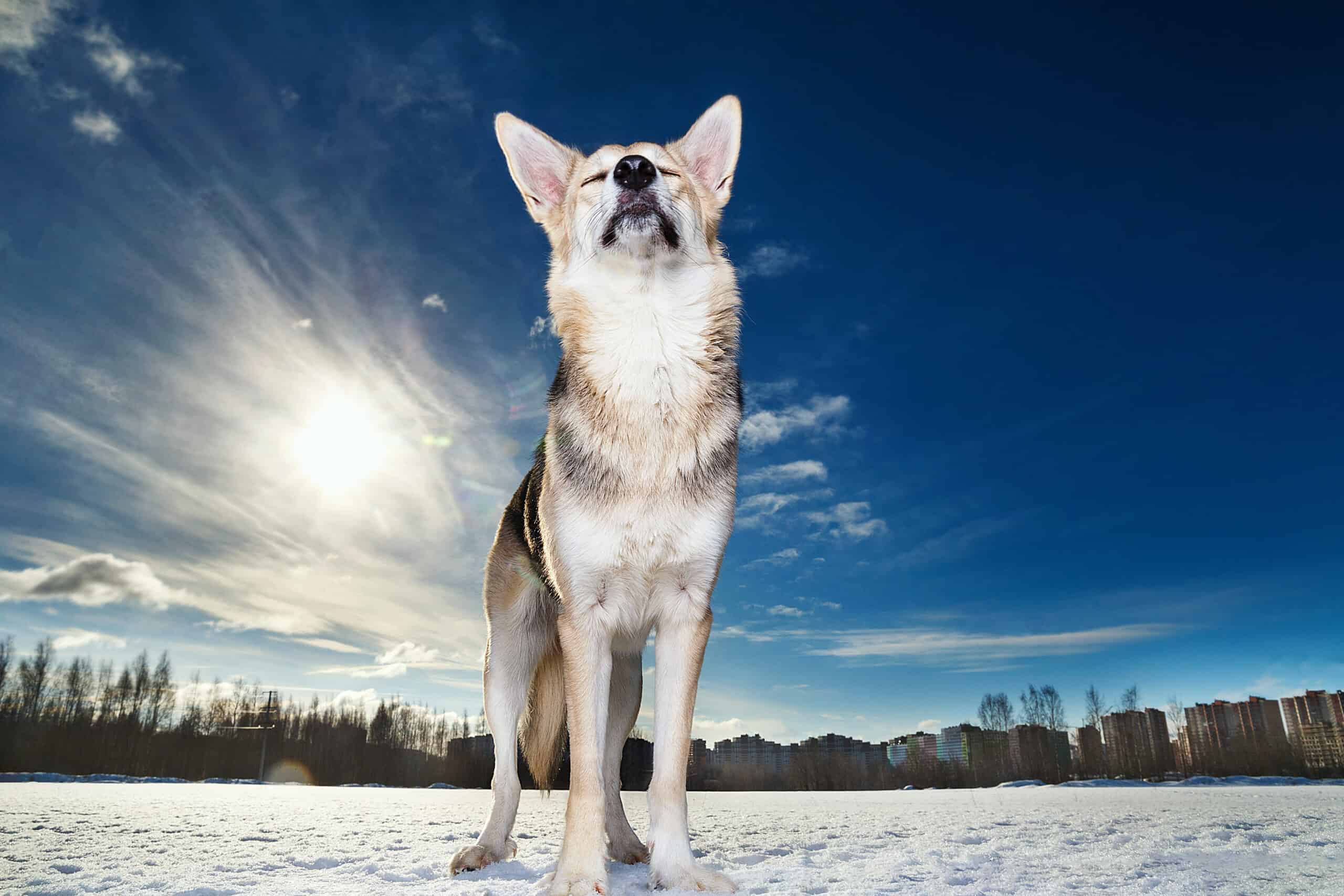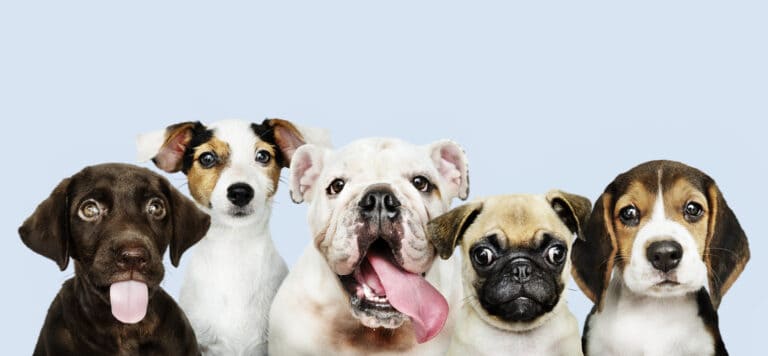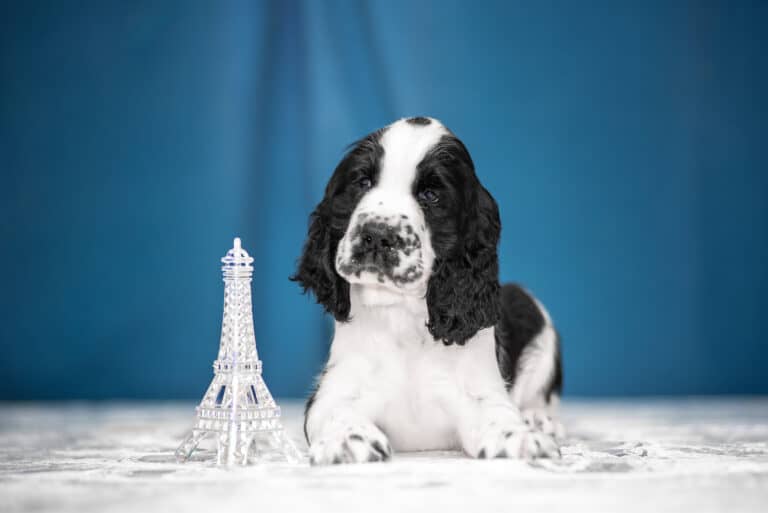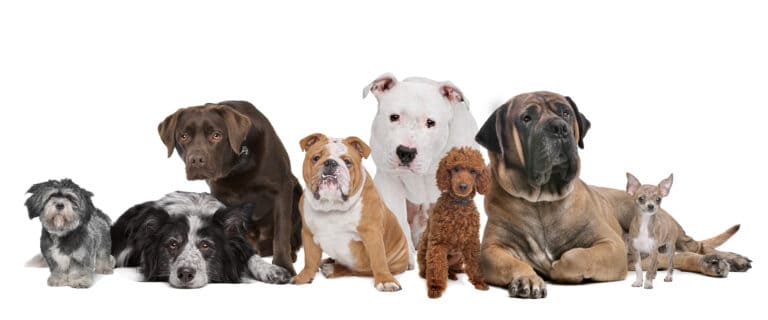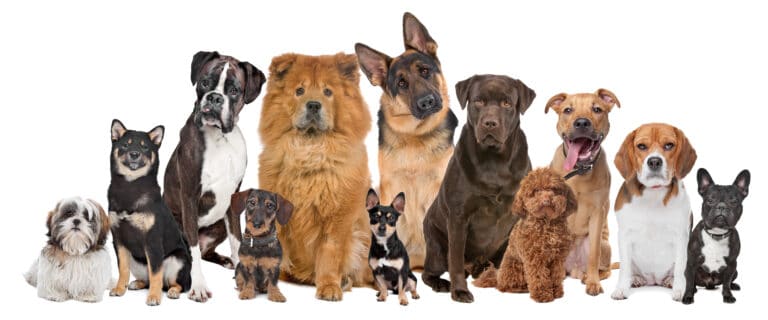All you wanted to know about the Alaskan Husky
The Alaskan husky is a breed of dog that has captivated the imagination of many people around the world. Known for their incredible strength, endurance, and intelligence, Alaskan huskies are often used as sled dogs in remote regions of Alaska, where they help to transport people, supplies, and equipment across vast distances of snow and ice.
Although often confused with the Siberian husky, the Alaskan husky is actually a distinct breed that was specifically bred for its working abilities, rather than its appearance. As a result, Alaskan huskies come in a wide variety of shapes, sizes, and colors, and are highly adaptable to different climates and terrains. See how similar these two look.


Despite their reputation as working dogs, Alaskan huskies are also beloved pets, known for their affectionate and loyal personalities.
Whether you’re looking for a companion to join you on your outdoor adventures or a hardworking sled dog to help you explore the wilds of Alaska, the Alaskan husky is a fascinating and versatile breed that is sure to capture your heart.
History
The history of the Alaskan husky dog is deeply intertwined with the history of sled dog racing in Alaska. In the early 20th century, long-distance sled racing became a popular sport and mode of transportation in the region, and breeders began to focus on developing a dog that could cover long distances at high speeds.
One of the most influential breeders in the history of the Alaskan husky was Leonhard Seppala, a Norwegian immigrant who moved to Alaska in 1900. Seppala is credited with developing some of the most successful lines of sled dogs in the early days of the sport, including his famous lead dog, Togo, who played a key role in the 1925 serum run to Nome.
Seppala’s dogs were a mix of Siberian huskies, Malamutes, and other breeds, but he placed a particular emphasis on breeding for speed and endurance. He also developed new training techniques and equipment, such as the use of ganglines to connect multiple dogs to a sled.
Over the years, the Alaskan husky breed continued to evolve as breeders experimented with different crosses and breeding strategies. Today, there is no standard for the breed, and Alaskan huskies can vary widely in appearance and temperament. Howbever, they are all united by their incredible athleticism, intelligence, and work ethic, making them one of the most fascinating and beloved dog breeds in the world.
Lineage
The lineage of the Alaskan husky dog is complex and varied, reflecting the breed’s long and fascinating history as a working dog in Alaska. While the breed is not recognized by any major kennel club, it is generally believed to be a type of dog rather than a distinct breed, and can trace its ancestry back to a number of different breeds and mixes.
One of the most significant influences on the lineage of the Alaskan husky was the Siberian husky, which was imported to Alaska in the early 20th century and quickly became popular among mushers (sled dog drivers) for their speed and stamina. However, Siberian huskies were often too heavy and large for the demands of long-distance racing, and breeders began to cross them with smaller, more agile breeds such as the Alaskan Malamute.
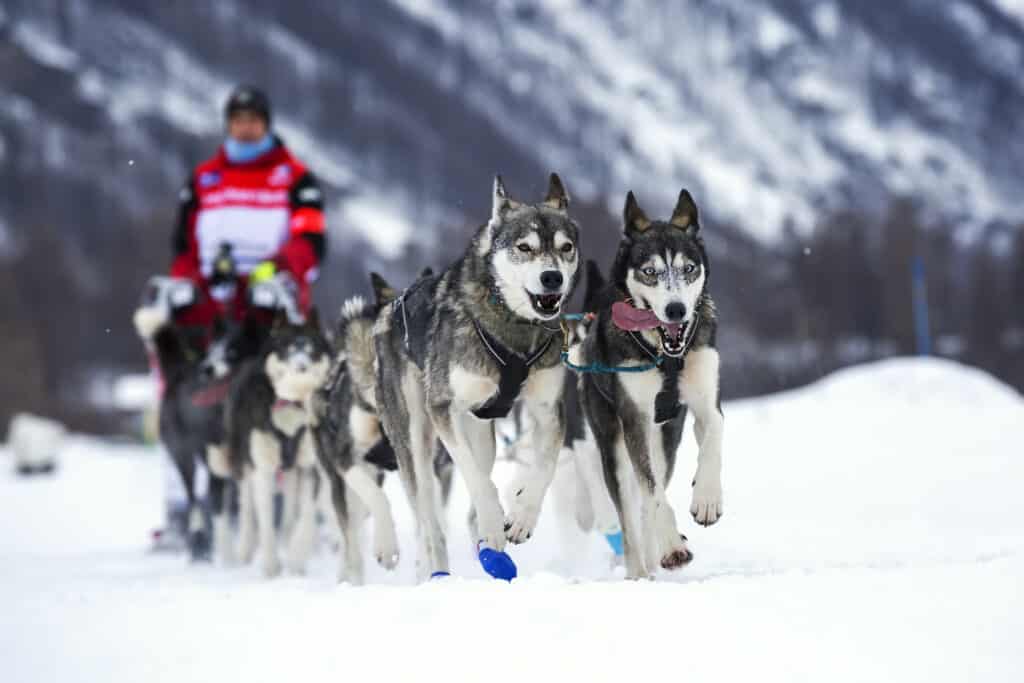
Other breeds and mixes that have contributed to the lineage of the Alaskan husky include the Canadian Eskimo Dog, the Chinook, and various types of hounds and pointers. Some breeders have also experimented with crosses involving breeds such as the German Shorthaired Pointer and the Weimaraner, in order to create a dog with even greater speed and endurance.
Despite their complex ancestry, Alaskan huskies are generally characterized by their lean, muscular builds, their short, smooth coats, and their high energy and endurance. They are also renowned for their intelligence and their ability to work well in teams, making them ideal for sled racing, search and rescue, and other demanding roles.
What Climate does the Alaskan Husky thrive in?
The Alaskan husky is a breed that thrives in colder climates, particularly in areas with snowy and icy conditions. They were originally bred to work as sled dogs in the harsh winter conditions of Alaska, and their thick, double coat and high energy levels make them well-suited to these types of environments.
In fact, the Alaskan husky’s coat is designed to keep them warm in extremely cold temperatures, and they are able to withstand temperatures well below freezing without issue. However, it’s important to note that while they may thrive in cold weather, they are still susceptible to heat stroke and other heat-related illnesses in warmer climates.
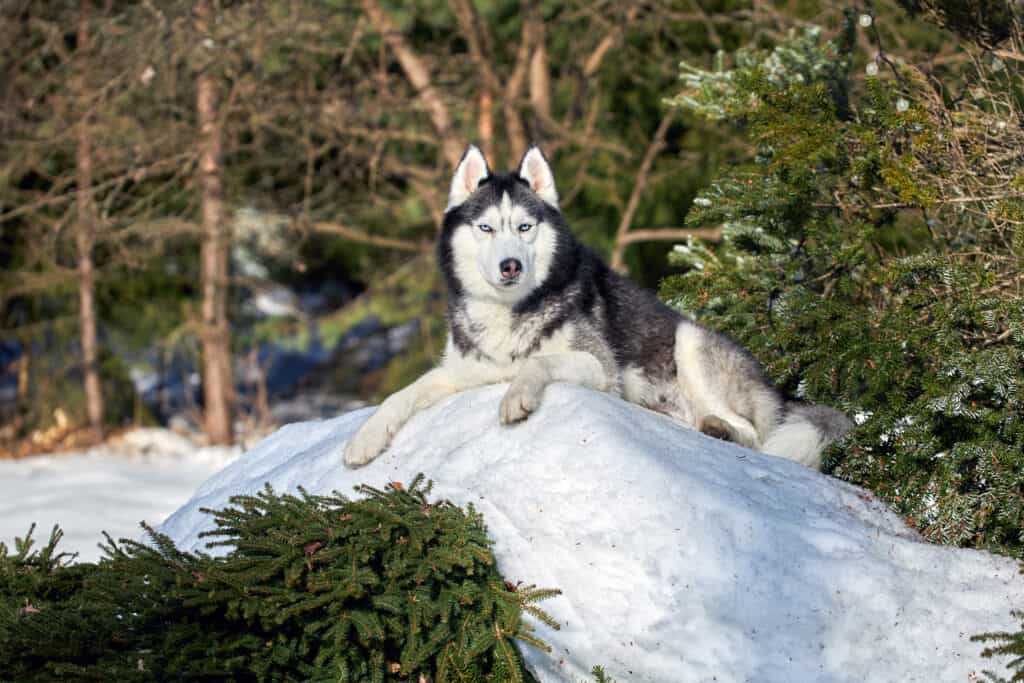
If you live in an area with hot and humid summers, it’s important to take steps to ensure that your Alaskan husky stays cool and comfortable. This may include providing them with access to shade and cool water, limiting their exercise during the hottest parts of the day, and keeping them indoors in air-conditioned areas when necessary.
Overall, the Alaskan husky is a breed that thrives in cold, snowy environments, but can adapt to a range of climates with proper care and attention. Whether you live in a cold or warm climate, it’s important to provide your Alaskan husky with the appropriate living conditions and care to ensure their health and well-being.
Physical Characteristics of the Alaskan Husky
The Alaskan husky is a medium-sized dog breed, typically weighing between 35 and 60 pounds. They have lean, muscular builds, with long, powerful legs and a deep chest that allows for efficient breathing during exercise. Their coats are typically short and smooth, and can range in color from black and white to shades of gray, red, and brown.
One of the most distinctive physical characteristics of the Alaskan husky is their almond-shaped eyes, which can be brown, blue, or a combination of the two. Their ears are erect and pointed, and they have a long, tapering tail that curves upward.

Overall, the Alaskan husky is built for speed and endurance, with a lightweight frame that allows them to cover long distances at high speeds. They are also incredibly adaptable, able to thrive in a wide range of environments and temperatures, from the cold and snowy conditions of Alaska to the warmer climates of the lower 48 states.
Temperament
The Alaskan husky is known for their high energy and intense drive, making them an ideal breed for activities such as sled racing, skijoring, and other sports that require speed and endurance. They are also highly intelligent and trainable, with a strong work ethic and a natural inclination to work as part of a team.
However, due to their intense drive and energy, the Alaskan husky can sometimes be challenging to train and manage for inexperienced dog owners. They require plenty of exercise and mental stimulation to stay happy and healthy, and may become destructive or anxious if left alone for long periods of time.
Overall, the Alaskan husky is a loyal and affectionate companion for those who are willing to put in the time and effort to meet their needs. They thrive in environments where they can work and exercise regularly, and are happiest when they have a clear sense of purpose and a strong bond with their human family.
Health Concerns
The Alaskan husky is generally a healthy and hardy breed, with a lifespan of around 10-15 years. However, like all breeds, they may be prone to certain health conditions, such as hip dysplasia, eye problems, and allergies.
Hip dysplasia is a common condition in many larger dog breeds, including the Alaskan husky. It occurs when the hip joint doesn’t develop properly, leading to inflammation and pain. Eye problems, such as cataracts and progressive retinal atrophy, can also occur in some Alaskan huskies, and may lead to vision loss.
Allergies are another potential health concern for Alaskan huskies, who may be sensitive to certain types of food, environmental allergens, or flea bites. Symptoms of allergies can include itching, scratching, and skin irritation.
Regular veterinary checkups, a healthy diet, and plenty of exercise can help keep your Alaskan husky healthy and happy throughout their life. It’s also important to work with a reputable breeder and to choose a dog with a clean bill of health to reduce the risk of inherited health conditions.
Exercise needs
The Alaskan husky is a high-energy breed with strong working instincts, and as such, they require plenty of exercise to stay healthy and happy. These dogs were originally bred for activities such as sled racing and hunting, and as such, they thrive in environments where they have plenty of opportunities to run, play, and work.
One of the best forms of exercise for the Alaskan husky is running. These dogs are built for speed and endurance, and they love to run for miles on end. Regular runs, either on a leash or off-leash in a safe, enclosed area, can help keep your Alaskan husky in top physical condition.
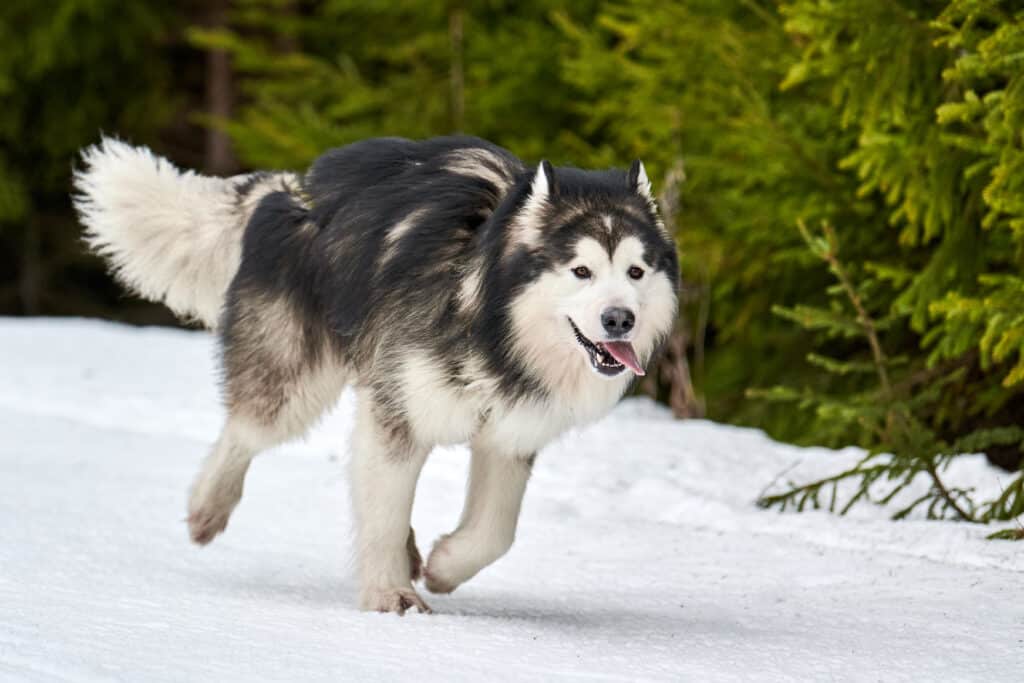
In addition to running, Alaskan huskies also enjoy other forms of exercise, such as hiking, swimming, and playing games like fetch. They are highly trainable and love to work, so activities like agility training, obedience training, and even tracking and hunting can provide a fun and rewarding outlet for their energy.
It’s important to note that the Alaskan husky requires not only physical exercise but also mental stimulation. These dogs are highly intelligent and need plenty of mental challenges to keep them engaged and happy. Games like hide-and-seek, puzzle toys, and obedience training can all help keep your Alaskan husky mentally sharp.
Overall, the Alaskan husky is a breed that requires plenty of exercise and mental stimulation to stay healthy and happy. If you are considering adopting an Alaskan husky, be prepared to provide them with plenty of opportunities to run, play, and work, and you will have a loyal and happy companion for years to come.
Nutrition
The Alaskan husky is a breed that requires a well-balanced diet to support their high energy levels and active lifestyle. As working dogs, they need a diet that provides them with enough protein and healthy fats to support muscle growth and repair, as well as the energy they need to stay active and alert.
When choosing a food for your Alaskan husky, it’s important to look for high-quality, protein-rich ingredients, such as meat, fish, and eggs. These ingredients provide the essential amino acids that your dog needs to build and maintain strong muscles and tissues. It’s also important to choose a food that is high in healthy fats, such as omega-3 and omega-6 fatty acids, which help support your dog’s immune system and keep their skin and coat healthy.
Carbohydrates are also an important part of your Alaskan husky’s diet, as they provide the energy they need to stay active and alert. Look for carbohydrates from whole food sources, such as sweet potatoes, brown rice, and oats, rather than from processed sources like corn or wheat.
It’s important to feed your Alaskan husky the appropriate amount of food for their age, size, and activity level. Overfeeding can lead to weight gain and health problems, while underfeeding can lead to malnutrition and poor health. Talk to your veterinarian to determine the appropriate amount of food for your Alaskan husky, and be sure to monitor their weight and adjust their diet as needed.
Overall, providing your Alaskan husky with a well-balanced, high-quality diet is essential for their health and well-being. Be sure to choose a food that meets their nutritional needs, and monitor their weight and overall health to ensure they are getting the nutrients they need to thrive.
Grooming
The Alaskan husky has a thick, double coat that requires regular grooming to keep it healthy and looking its best. The coat is designed to keep the dog warm in cold weather and cool in hot weather, but it can also trap dirt, debris, and even parasites, making regular grooming essential.
To keep your Alaskan husky’s coat healthy, you should brush it at least once a week, using a slicker brush or comb to remove loose hair and tangles. During shedding season, which occurs twice a year, you may need to brush your dog’s coat more frequently to remove the excess hair.
Bathing your Alaskan husky should be done on an as-needed basis, as excessive bathing can strip the natural oils from their coat and skin. Use a mild dog shampoo and rinse thoroughly to ensure that all soap residue is removed. It’s important to dry your Alaskan husky thoroughly after a bath to prevent dampness and the growth of bacteria or yeast.
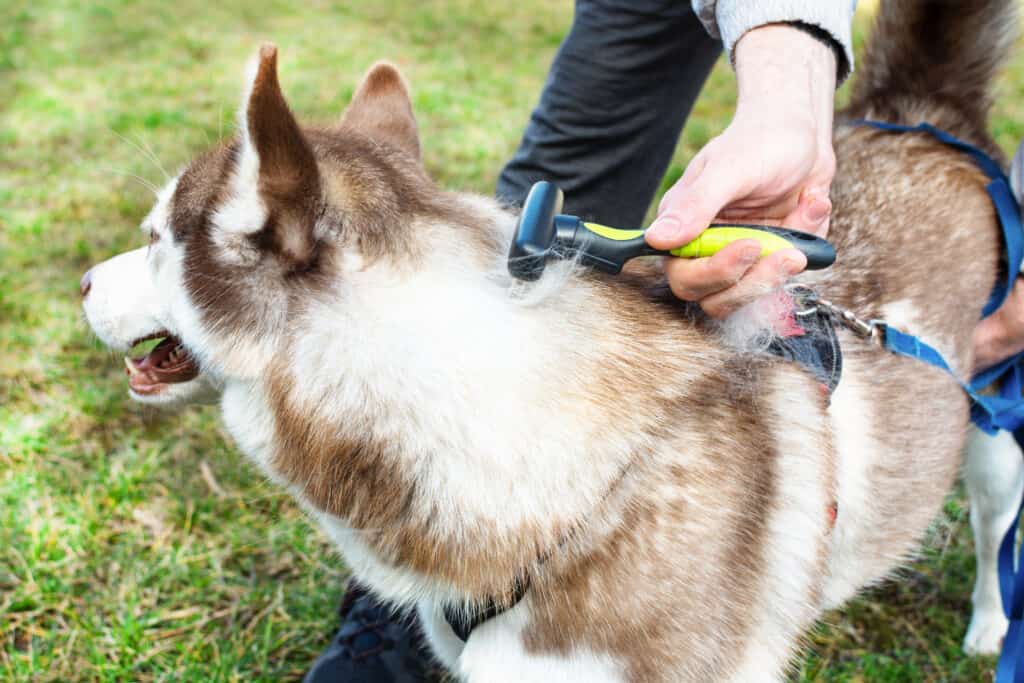
Another important aspect of grooming your Alaskan husky is nail trimming. Long nails can cause discomfort and even lead to injury, so it’s important to keep them trimmed to a safe length. It’s best to use a clipper designed specifically for dog nails, and be sure to avoid cutting into the quick, which is a sensitive nerve and blood vessel in the nail.
Finally, it’s important to regularly check your Alaskan husky’s ears, teeth, and eyes for any signs of infection or other issues. Clean their ears with a cotton ball and an ear-cleaning solution, brush their teeth regularly with a dog toothbrush and toothpaste, and keep an eye out for any redness, discharge, or other signs of irritation or infection.
Overall, regular grooming is essential for the health and well-being of your Alaskan husky. By brushing, bathing, nail trimming, and checking their ears, teeth, and eyes, you can help ensure that your dog looks and feels their best.
Is the Alaskan husky dog is easy to train?
The Alaskan husky is an intelligent breed that is generally eager to please their owner, but their strong-willed nature can sometimes make them a bit more challenging to train than some other breeds. These dogs have a high prey drive and may be easily distracted by sights, sounds, and scents in their environment, making it important to provide them with consistent training and socialization from a young age.
One of the most important aspects of training an Alaskan husky is establishing yourself as the pack leader and maintaining a firm, consistent approach to training. Positive reinforcement methods, such as rewards and praise for good behavior, are generally the most effective approach with this breed, as punishment or harsh training methods can lead to stubbornness and resistance.
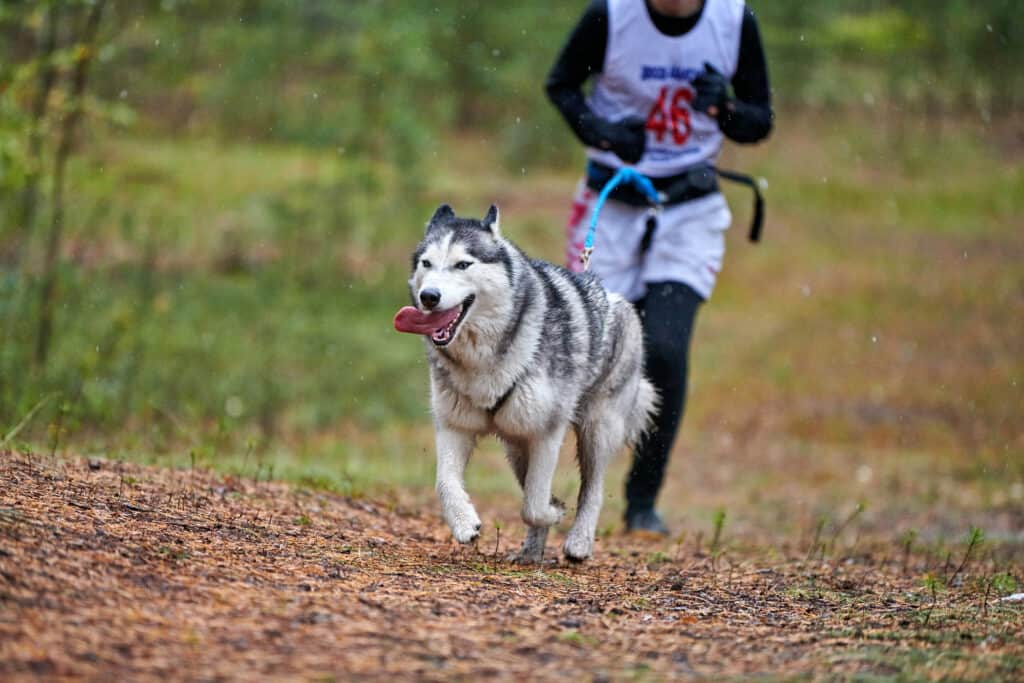
Because of their high energy levels and natural athleticism, many Alaskan huskies excel in activities like agility, obedience, and even skijoring or sled dog racing. Providing your Alaskan husky with plenty of exercise and mental stimulation can help them focus and improve their trainability.
Overall, while the Alaskan husky may require a bit more effort and consistency in their training than some other breeds, they are generally intelligent and eager to please their owners. With patience, consistency, and positive reinforcement, these dogs can be trained to excel in a variety of activities and make wonderful companions.
The Alaskan husky as a house pet
The Alaskan husky is a breed that was originally developed for working purposes, and as such, they have a high energy level and require a significant amount of exercise and mental stimulation. While it is possible to keep an Alaskan husky as a house pet, it’s important to understand the specific needs of this breed before making a decision.
One of the most important factors to consider when deciding if an Alaskan husky is suited to be a house pet is the amount of space available in your home. These dogs are large and active, and they require plenty of room to move around and play. A house with a large yard or access to open space is ideal for an Alaskan husky, as they need plenty of exercise to stay healthy and happy.
Another factor to consider is the time and effort required to train and socialize an Alaskan husky. These dogs can be strong-willed and may require more patience and consistency in their training than some other breeds. Additionally, they have a high prey drive and may not be well-suited to homes with other small pets.
Ultimately, whether an Alaskan husky is suited to be a house pet depends on a variety of factors, including the individual dog’s temperament, energy level, and exercise needs, as well as the owner’s lifestyle and ability to provide for the dog’s needs. With proper training, exercise, and socialization, however, an Alaskan husky can make a loving and loyal companion for the right owner.
The Alaskan husky as a Special Needs Dog
While the Alaskan husky is primarily known for its working abilities as a sled dog, it has also been used as a special needs dog in some situations. The breed’s high intelligence, loyalty, and ability to handle cold temperatures make them well-suited to certain roles in assisting people with disabilities or special needs.
One way in which Alaskan huskies have been used as special needs dogs is as service animals for people with disabilities, such as visual or hearing impairments. These dogs can be trained to perform tasks such as guiding their handler through busy or unfamiliar environments, alerting them to potential hazards, or providing physical support and stability.
Alaskan huskies have also been used as therapy dogs in certain settings, such as hospitals, nursing homes, and schools. Their friendly and outgoing nature, combined with their ability to handle a range of weather conditions, makes them well-suited to providing comfort and companionship to people in need.
Another role in which Alaskan huskies have been used as special needs dogs is in search and rescue operations. These dogs can be trained to track scents and locate missing people in a variety of environments, including snow and ice.
Overall, while the Alaskan husky is primarily a working dog breed, its intelligence, loyalty, and versatility make it well-suited to certain roles as a special needs dog. However, it’s important to remember that not all Alaskan huskies will be suited to these roles, and specialized training and socialization will be necessary for any dog used in these capacities.
Behavior patterns
The behavior patterns of the Alaskan husky dog are complex and varied, reflecting the breed’s long history as a working dog and its unique temperament. While individual dogs may exhibit different behaviors depending on their personality and training, there are some general behavior patterns that are commonly seen in Alaskan huskies.
One of the most notable behavior patterns of the Alaskan husky is its high energy level and need for exercise. These dogs were bred to run and work over long distances, and as such, they require plenty of daily exercise to stay healthy and happy. Without enough physical activity, an Alaskan husky may become bored or anxious, which can lead to destructive behaviors.
Another behavior pattern that is common in Alaskan huskies is their independent streak. These dogs are highly intelligent and have a strong instinct to explore and roam. While they can be trained to follow commands, they may sometimes choose to ignore them in favor of following their own instincts. This can make training an Alaskan husky a challenge, but with patience and consistency, they can learn to follow rules and commands.
Alaskan huskies are also known for their strong prey drive, which can make them unsuitable for homes with small pets. These dogs were originally bred to hunt and work in packs, and as such, they may view smaller animals as prey. Proper socialization and training can help to reduce this behavior, but it is important to understand the breed’s natural tendencies when considering them as a pet.
Overall, the behavior patterns of the Alaskan husky reflect its history and temperament as a working dog breed. While they can be challenging pets, they are also highly intelligent and loyal, and with the right training and socialization, they can make excellent companions for the right owner.
Some famous Alaskan husky dogs
There have been many famous Alaskan husky dogs throughout history, both in the world of sled dog racing and beyond.
Balto
One of the most well-known Alaskan huskies was Balto, who played a pivotal role in the delivery of diphtheria antitoxin to Nome, Alaska in 1925. Balto was the lead dog of the final sled team that brought the antitoxin to Nome, and his bravery and determination made him an instant hero. Today, a statue of Balto stands in New York City’s Central Park, commemorating his contributions to the delivery of the antitoxin.
Togo
Another famous Alaskan husky was Togo, who played a key role in the serum run to Nome. Togo was known for his intelligence, courage, and stamina, and he was considered by many to be the best sled dog of his time. While Togo did not receive the same level of recognition as Balto at the time of the serum run, his contributions were later celebrated in books and movies about the event.
Granite
In the world of sled dog racing, there have been many famous Alaskan huskies as well. One of the most notable was Susan Butcher’s lead dog Granite, who helped Butcher win the Iditarod Trail Sled Dog Race four times in the 1980s and 1990s.
Others
Other famous Alaskan huskies in the world of racing include Colleen Robertia’s lead dog Quito, who helped Robertia become the first woman to win the Yukon Quest, and Jeff King’s lead dog Diesel, who helped King win the Iditarod four times.
Overall, the Alaskan husky has played a significant role in the history of Alaska and the world of sled dog racing, and many individual dogs have become famous for their bravery, intelligence, and athleticism.
Some famous movies with Alaskan husky dogs
There have been many famous and lovable Alaskan huskies in the movies
The Call of the Wind
One of the most famous Alaskan husky dogs in movie history is Buck, the protagonist of Jack London’s classic novel “The Call of the Wild”. Buck is a large and powerful Alaskan husky who is kidnapped from his home in California and sold as a sled dog in the Yukon during the Klondike Gold Rush of the 1890s. Throughout the novel, Buck demonstrates his intelligence, strength, and adaptability as he navigates the harsh wilderness of the North.
Over the years, Buck has been portrayed in numerous film adaptations of “The Call of the Wild”. One of the most iconic portrayals was by the legendary actor Clark Gable in the 1935 film version. In this film, Buck was played by a mixed breed dog named Buck, who was trained by Hollywood animal trainer Frank Weatherwax.
More recently, Buck was brought to life in the 2020 adaptation of “The Call of the Wild“, which featured a CGI-rendered version of the Alaskan husky. The film starred Harrison Ford as John Thornton, a prospector who forms a bond with Buck and helps him navigate the dangers of the Yukon.
Eight Below
Aside from Buck, there have been other Alaskan huskies who have appeared in movies over the years. For example, the film “Eight Below“ (2006) starred a pack of Alaskan huskies who are left behind in Antarctica and must fend for themselves in the harsh environment.
The dogs were played by a group of trained Alaskan huskies, and the film was praised for its realistic portrayal of the breed’s intelligence and resilience.
Conclusion
In conclusion, the Alaskan husky is a remarkable and highly adaptable breed of dog that has a rich history of working in some of the harshest and most unforgiving environments on the planet. With their incredible strength, endurance, and intelligence, these dogs have proven themselves time and time again as invaluable partners to humans in a wide range of activities, from sled racing to search and rescue missions.
While the Alaskan husky’s physical and behavioral characteristics may make them challenging to care for as house pets, their loyalty and affection towards their owners make them a beloved companion to many. With proper training, socialization, and exercise, Alaskan huskies can thrive in a variety of environments and make great additions to active families or individuals.
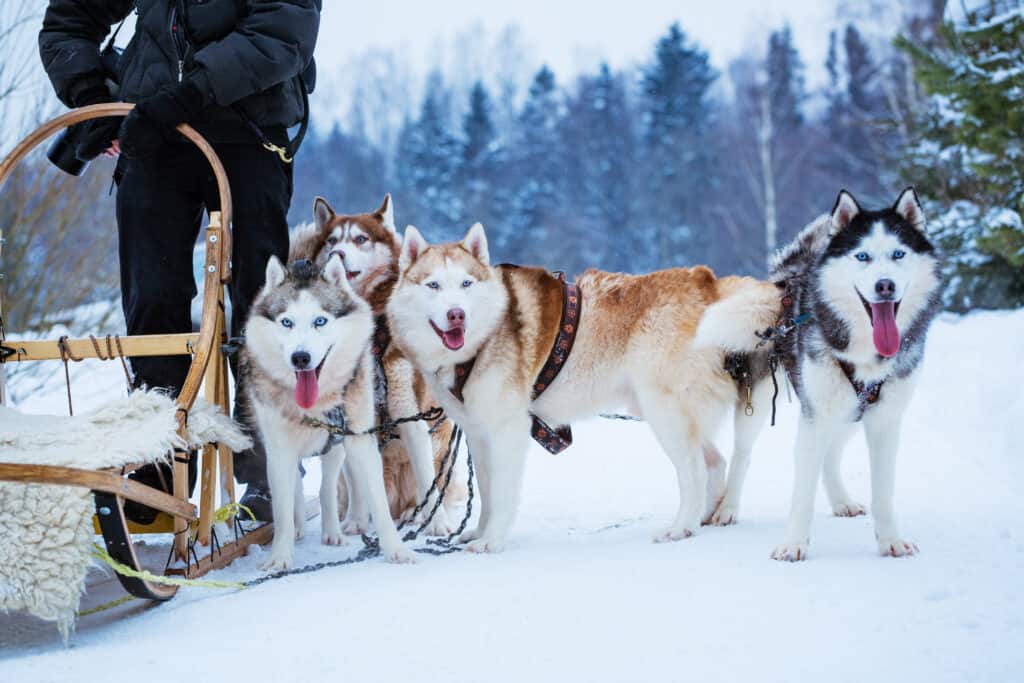
Despite some potential health concerns, Alaskan huskies are generally a hardy breed with a lifespan of 10 to 15 years. As with all dogs, it is important to provide them with a balanced and nutritious diet, regular veterinary check-ups, and appropriate grooming.
Overall, the Alaskan husky is a breed that inspires awe and admiration in many who encounter them. Whether they are racing across the tundra or curling up on the couch with their owners, these dogs are a testament to the incredible bond between humans and animals, and to the enduring power of nature in all its beauty and unpredictability.

